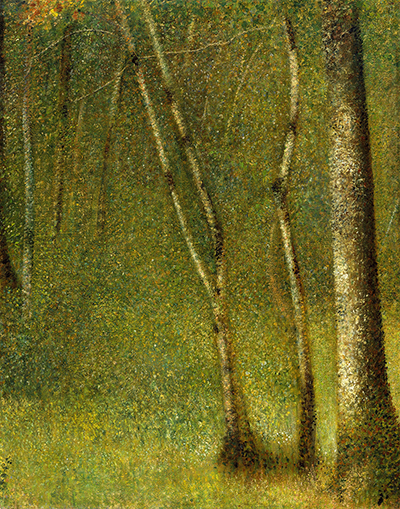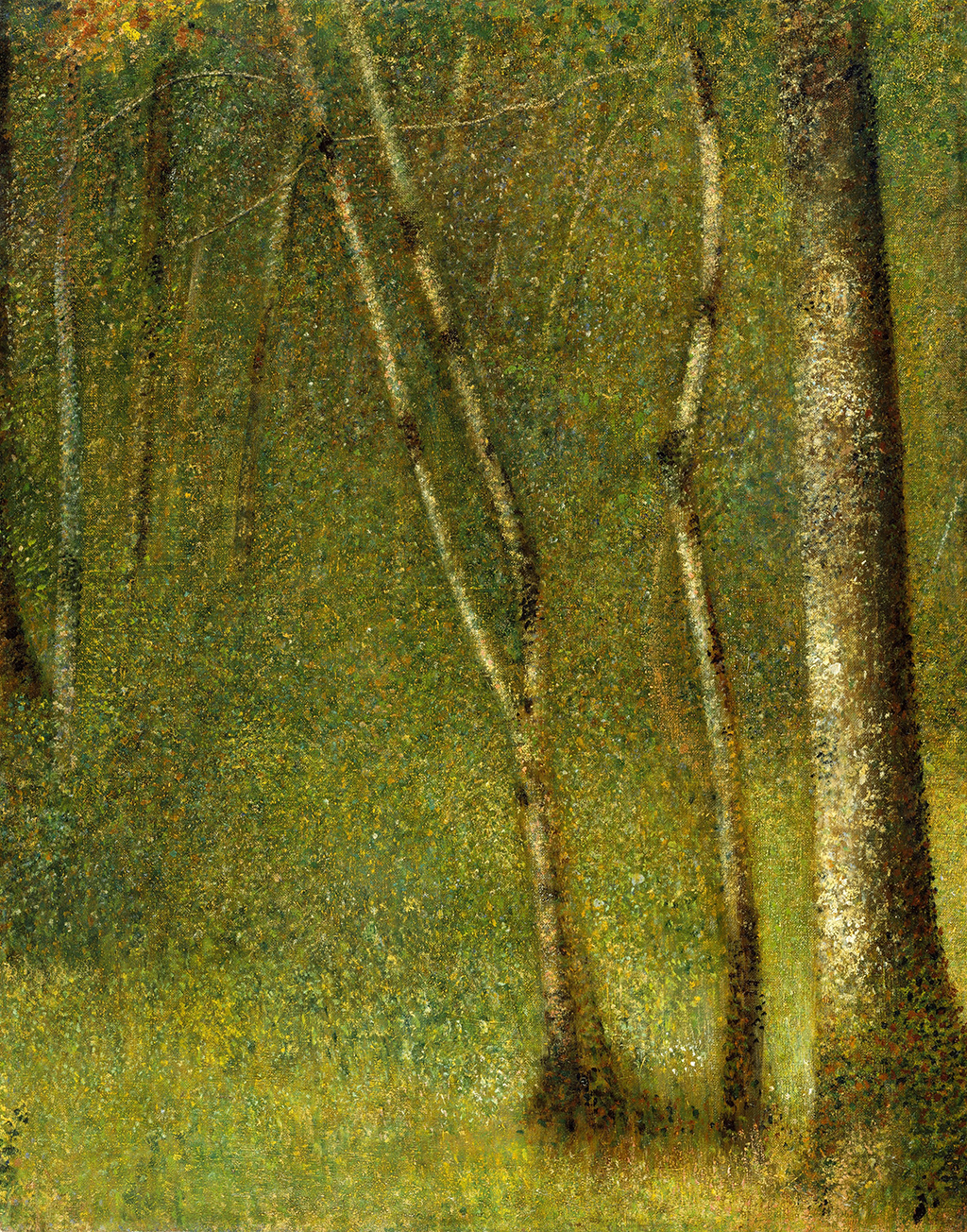The Forest at Pontaubert is an oil on canvas work, painted by Georges Seurat in 1881. It can be seen at The Metropolitan Museum of Art, in Gallery 825.
This painting, a fine example of pointillism and introduces themes and colours he will use in later famous paintings.
While apparently a simple picture of trees, this work captures light and intensity within a forest glade to great effect.
The painter spent time in the summer and early Autumn of 1881 in Pontaubert, a village in France to the southeast of Paris. This village was known as a place for landscape artists to visit, but Seurat brought his unique personal style to this work which differs substantially from the Barbizon landscape painters who visited the area before him whose work aimed towards realism.
This work was begun while on his trip to the village, but completed that winter in his studio. He captures the essence and stillness of a peaceful forest glade, with an array of shades of green and yellow, and subtle use of light and colour. The vertical tree trunks form a distinctive pattern that stands out from the leafy backdrop. The painting is of interest for the capturing of colour and atmosphere, whilst keeping a simple palate and unobtrusive subject.
It feels, to the viewer, that they have found themselves sharing the artist's experience of a pleasant summer's afternoon in the wood. There is general atmosphere of relaxation and calm. Yet, the use of some darker shades and the way the trees tangle together in the painting introduces, too, a feeling of adventure and exploration. The painting itself shows only trees, leaves, and grass, but it holds a suggestion, a promise of something more if only the artist and the viewer are brave enough to go deeper into the wood. As such, what at first appears to be quite a simplistic scene provides a route into a darker, secretive world that invites the viewer to travel into the depths of the forest.
This style will be developed by the artist in future paintings and is instantly recognizable as his work. Compared to much of his work that provides a commentary on modern laugh and relationships, this work is a pure celebration of nature and the natural world, but manages, still, to introduce a hint of excitement and mystery, an emotional reaction to the forest at Pontaubert.





